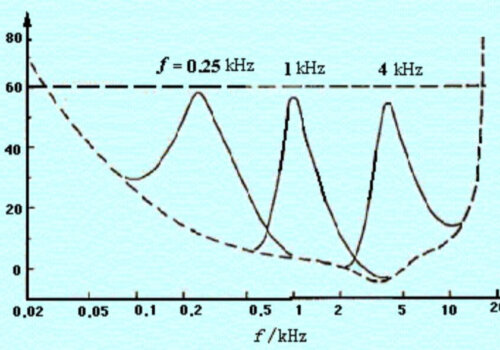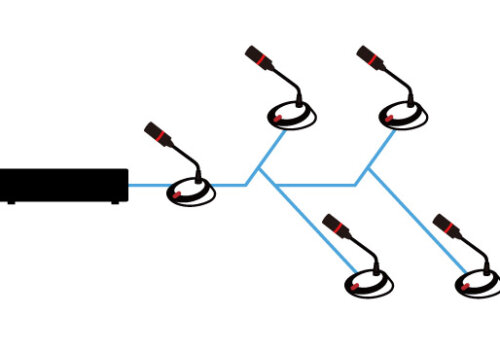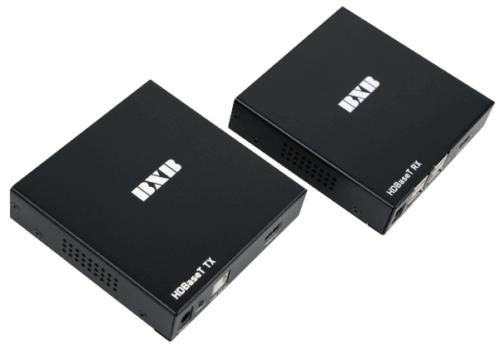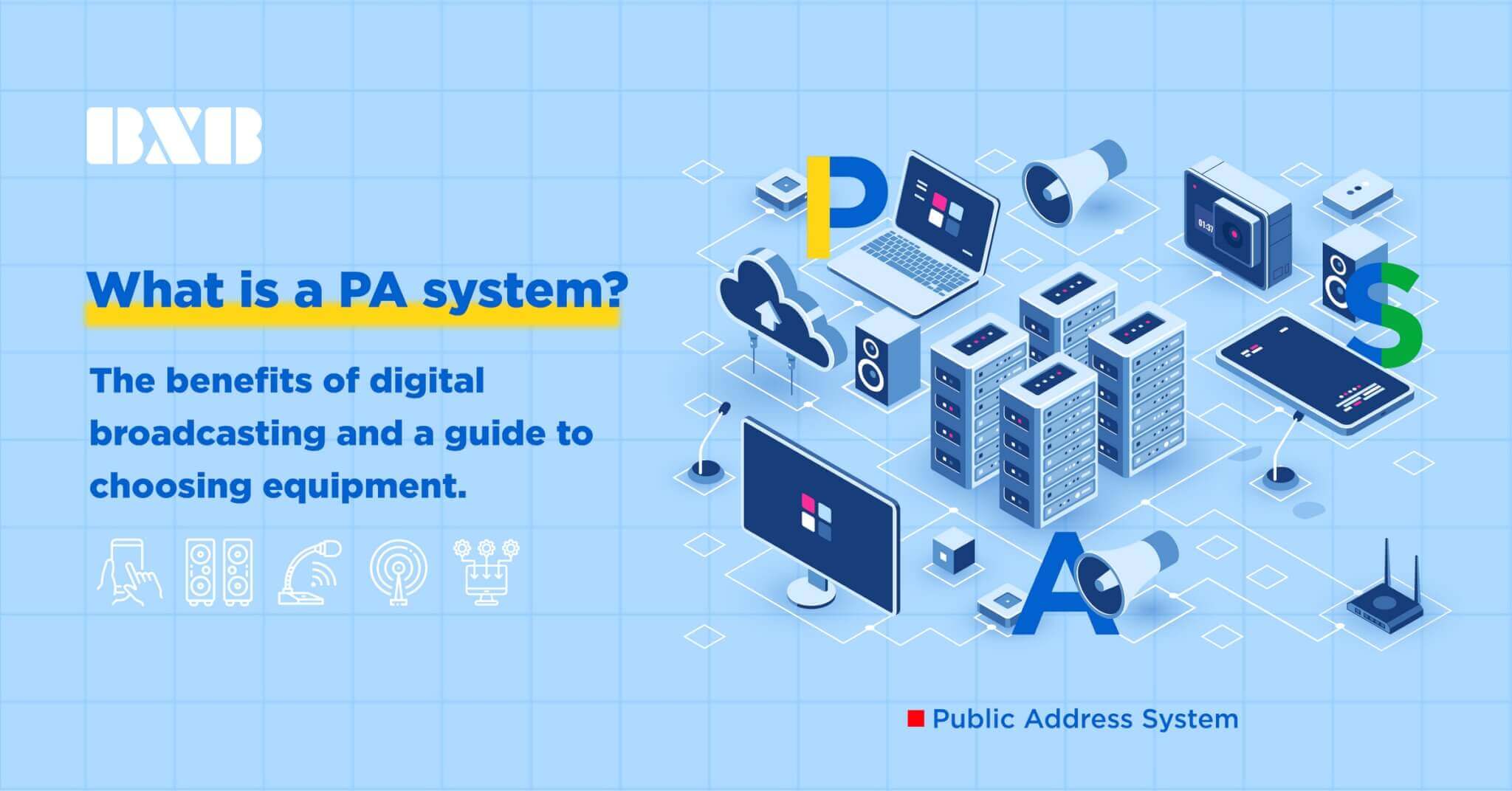
The Public Address System, also known as the PA System, is a broadcasting system used for public services within a specific area. It consists of equipment such as microphones, amplifiers, and speakers. It is widely used in places like train stations, airports, schools, government institutions, local communities, supermarkets, department stores, factories, office buildings, and even on ships. Its common functions include general and emergency broadcast messages as well as background music playback. It is considered an essential infrastructure in various public locations.
The PA System is not just about equipment; it is a functional requirement. Different environments and user operations require different setups. Its diverse range of functions can meet the needs of different users. Unlike typical security surveillance systems, the PA System can deliver relevant information clearly and accurately to specific areas, avoiding the creation of environmental noise that may disrupt normal conversations and daily activities of other individuals. It serves the purpose of enhancing security measures while creating a harmonious atmosphere.
Mainstream broadcasting system architecture
Traditional PA systems typically use analog audio systems, which involve connecting multiple equipment and cables. However, when complex functionality is required, it becomes challenging to assemble and maintain, and zone broadcasting cannot be achieved.
With the advancement of technology and digitalization needs, PA systems have moved towards a new digital architecture, providing users with greater convenience in operation and higher-quality message transmission experience. Modern mainstream broadcasting can be divided into audio broadcasting and video broadcasting. By utilizing digital and network technologies for transmission architecture, a comprehensive PA system solution can be created, simplifying the overall structure, configuration, operation, and maintenance. This can be easily achieved by connecting through network cables to PoE switches, enabling more flexible zone broadcasting.
- Audio broadcasting
With the current Ethernet connection technology, we can use a user-friendly computer to send out broadcast voice inputs. These inputs are then decoded by terminal devices and transmitted to amplification devices for broadcasting. This system allows us to control hundreds of different zones simultaneously using just one computer. We can also set up group broadcasts for quick announcements, easily schedule broadcasts based on daily routines, and trigger emergency notifications without any hassle. You can refer to the BXB WMP-3000 digital addressing broadcast system for more details.
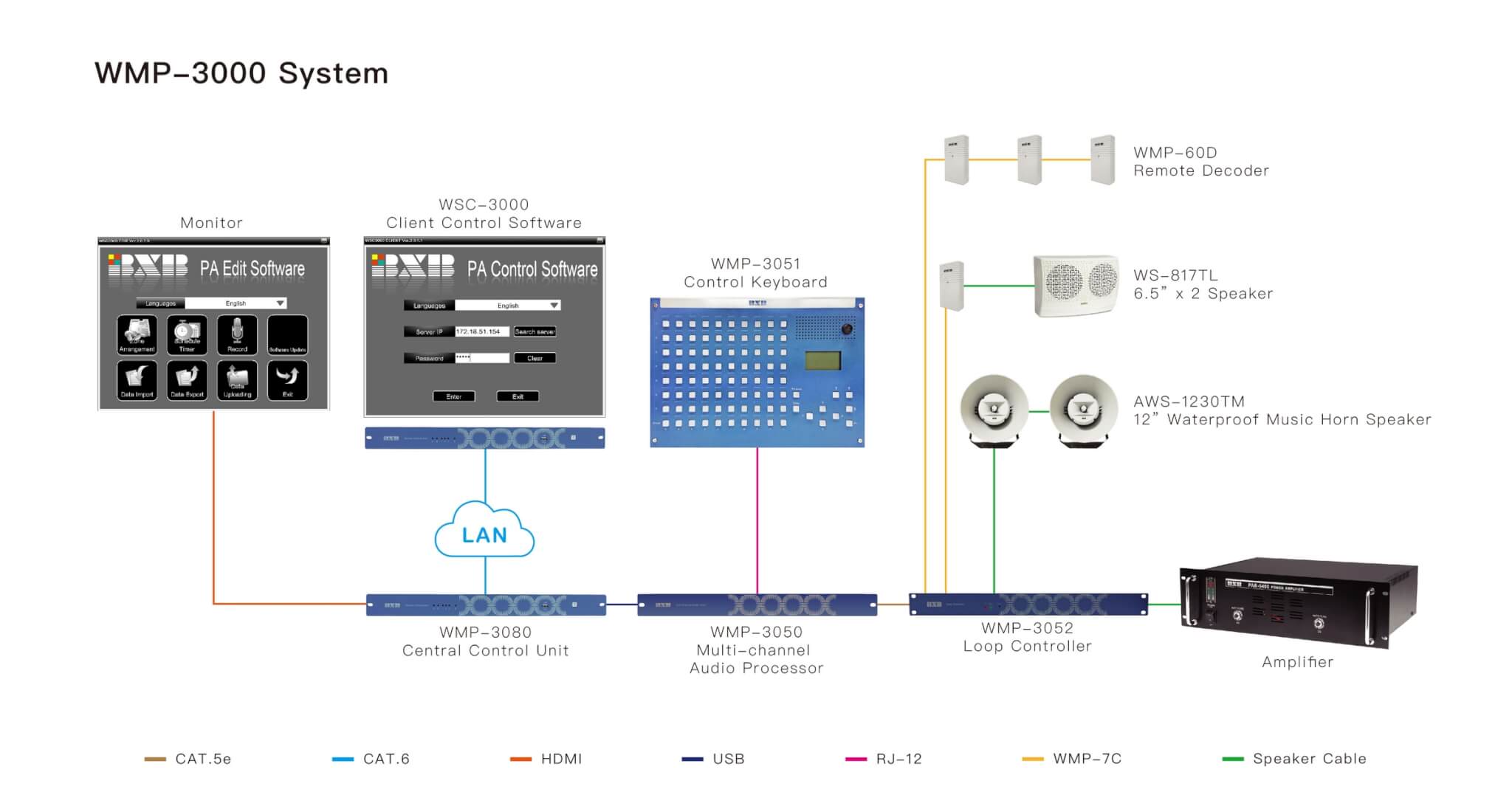
- Video broadcasting
Also known as silent broadcasting, it’s a way to connect all the TVs in an area using existing network connection technology. You can control and broadcast using a computer or a smartphone remotely and in real-time. Besides sharing various multimedia content like videos, images, and audio, you can also achieve silent broadcasting through text notifications in a scrolling marquee format. This system combines the primary streaming technology with IoT (Internet of Things) technology, which greatly enhances scalability and flexibility to adapt to potential changes in venue layouts and increasing device requirements in the future. For example, by integrating and scheduling environmental control devices, you can smartly and automatically manage the power switches of appliances in the area, such as TVs, projectors, fans, and air conditioners, to achieve intelligent energy management. You can refer to the BXB ICP-5100 network audiovisual broadcasting system for more information.
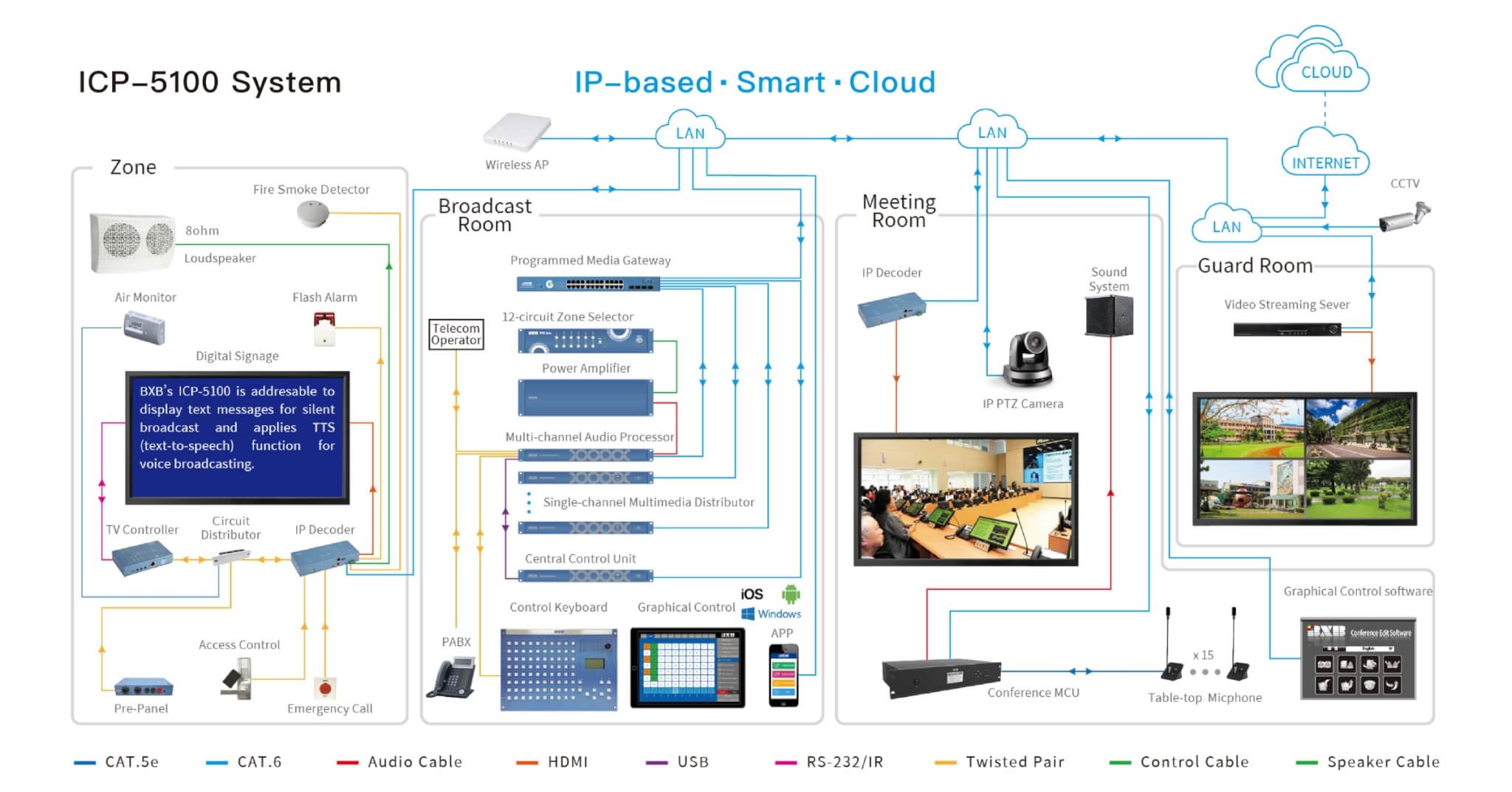
Campus PA System Applications
In densely populated urban areas, schools are often located near residential neighborhoods. The frequent broadcasting and ringing on campus can be a source of noise for nearby residents, leading to frequent complaints from neighbors. It’s impossible to completely block the transmission of sound, so how can we reduce the frequency of interference? One way is to implement zoning and targeted broadcasting, effectively reducing the frequency of broadcasting over large areas. That’s why some people refer to it as “eco-friendly addressed broadcasting.” It’s considered the most appropriate standard feature in high-density community settings.
How do you choose the equipment configuration? You can plan based on the following requirements:
Speakers/Audio System: You can choose between indoor and outdoor configurations, depending on the sound quality, durability, and aesthetics you’re looking for. For indoor use, the main consideration is clear and non-dispersed sound that blends well with the room’s layout. It’s recommended to select directional speakers that match the decor, as they are also convenient for listening tests and teaching purposes. However, in venues like event centers or sports arenas, the focus is on reducing echo and reverberation. In such cases, column array speakers are ideal as they effectively minimize sound reflections. For outdoor use, the priority is waterproof and dustproof capabilities. It’s best to opt for horn speakers with ABS material enclosures, as they offer durability and safety.
Teaching Microphone: Usually, teachers have a need for amplification during their classes. Wired microphones can limit flexibility, and holding them for long periods can potentially cause joint injuries. Teaching voice amplifiers tend to generate a lot of noise and have sharp, piercing sound. I recommend using wireless teaching microphones instead. They provide stable signals, clear sound without feedback, and they’re easy to use with a simple plug-and-play setup.
Teaching Audio Mixer: To avoid damage to the microphone jack caused by chalk dust in the classroom, it’s better to choose a separate input panel for sound. This makes it easier to use and maintain. I recommend using an audio mixer with multiple input sources. Not only does it provide more stable sound transmission, but it also allows you to connect the audio output from the teacher’s laptop to the classroom speakers or audio system.
Remote Control System: In this digital age of zone broadcasting, it’s essential to have a convenient, user-friendly interface. With a remote control system, you can use a mobile app to broadcast messages instantly and convert text to speech (TTS) for school announcements and important information. This includes things like dismissal time, campus activities, exam notifications, and more. It eliminates the need for manual broadcasting from a control room, saving on manpower and costs.
Smart Campus System: In addition to incorporating IoT management technology, audiovisual streaming, and multimedia integration, the smart campus system aims to intelligently manage and enhance the richness of teaching materials. Schools can schedule and automate the control of electrical devices within the campus. It also integrates government Open Data, providing features such as earthquake alerts, weather and air quality data, real-time bus arrival information, and the availability of bicycles at Ubike stations. The goal is to create a convenient, comfortable, safe, and enjoyable learning environment.
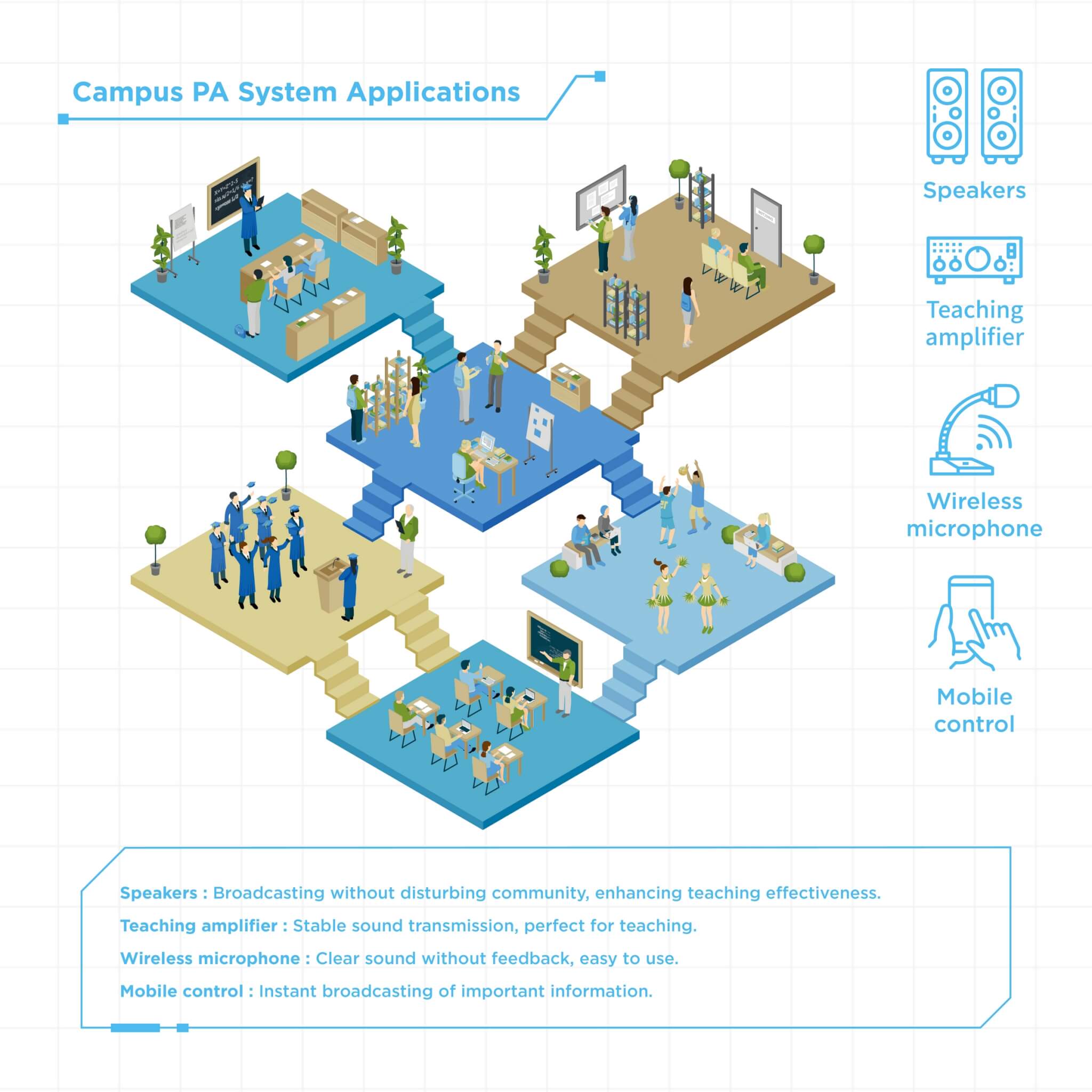
Applications of Factory Broadcasting Systems
Many factories often encounter certain issues such as loud noise during machinery construction, large and open factory spaces without clear partitions, interference between broadcast information, poor voice clarity, and difficulties in responding promptly to emergencies, leading to losses. Additionally, outdated broadcasting equipment can be challenging to maintain and update, affecting the efficiency of message delivery within the factory.
To address these challenges, we can implement a new type of PA system configuration that minimizes interference between sounds, ensuring clear broadcast content is heard throughout the entire factory or specific zones. By incorporating energy-efficient environmental control devices, factory management becomes more convenient and real-time.
How do we choose the equipment configuration? The planning can be based on the following requirements:
Speakers/Audio System: To ensure effective information dissemination, it’s important to choose horn speakers with dustproof, waterproof, and even fireproof features. These speakers are sleek, durable, and can enhance sound pressure for clearer and richer audio output. In factory environments, there may be various sources of interference, so the speaker equipment needs to have good signal stability and even remote control capabilities. To save time and costs associated with personnel movement, I recommend using speakers with intercom functionality for two-way communication. This enables real-time response and handling of various situations effectively.
Broadcast Host: In order to improve factory productivity, remote control and automation are essential nowadays. That’s why choosing the right broadcast host is crucial. With an intuitive graphical interface, you can quickly edit broadcast content for both the entire factory and specific zones. By setting up scheduled broadcasts, you can automate playback without the need for manual control. If any equipment issues occur, the system will automatically report them to the central control and provide instructions for broadcasting and personnel deployment, enabling fast troubleshooting. You can also use your mobile phone to make broadcast calls from anywhere or utilize text-to-speech (TTS) broadcasting, greatly enhancing the flexibility and real-time nature of your broadcasts.
Environmental Safety Monitoring: In a factory environment, there are various products and raw materials that require thorough monitoring and detection. I recommend choosing a broadcast system with environmental monitoring capabilities. In case of emergencies, this system can trigger on-site alert devices such as theft alarms and flashing speakers, effectively addressing and preventing harm. It also integrates real-time disaster alerts and displays weather and air quality data. If there’s a warning issued by the meteorological agency, the system will automatically trigger a broadcast across the entire factory, providing the most immediate emergency response. This ensures greater safety and protection for both factory personnel and assets.
Control Room/Guard Room: In addition to connecting to the CCTV cameras within the factory, I recommend selecting a system that allows video streaming to a TV wall. This way, in various situations, the images can be magnified and displayed for security guards and management personnel. They can also use microphones to broadcast messages and issue deterrent warnings.
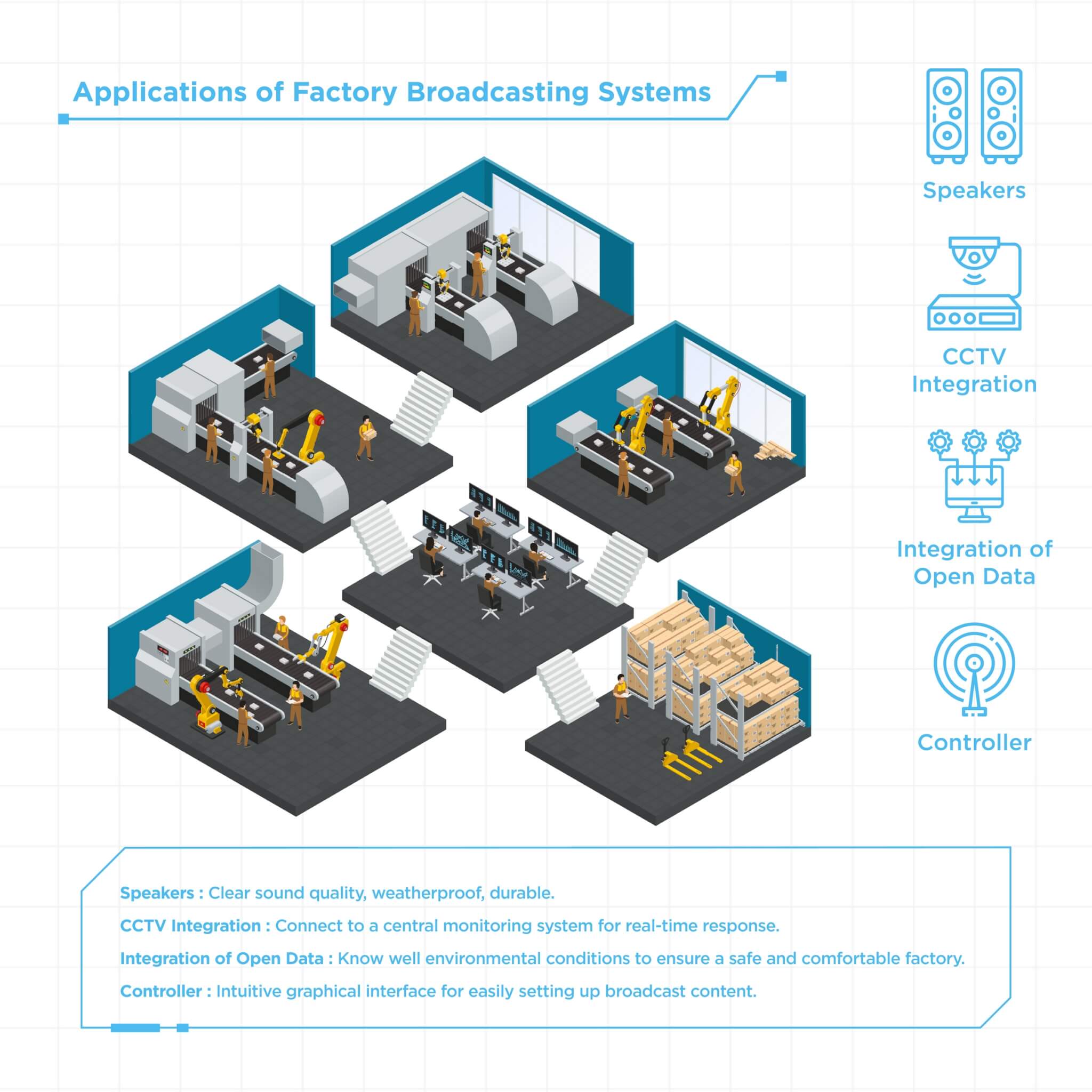
Applications of Mall Public Address Systems
When we’re shopping at department stores, wholesale stores, supermarkets, and convenience stores, we often hear various promotional advertisements, voice messages, and music. These are all aimed at increasing brand and product exposure and enhancing the shopping experience for consumers through high-quality music and event promotions. However, too many or too few announcements can have a negative impact on the shopping experience, so finding the right balance is important. By utilizing zone-based broadcasting and scheduled announcements, messages can be broadcasted in different areas at specified times. A well-designed audiovisual PA system can also liven up the atmosphere of the mall while ensuring safety and security.
Choosing Broadcast Equipment and How to Configure Them? You can plan your setup based on the following requirements:
Speakers/Amplifiers: To maintain the aesthetics and overall coherence of the mall, it is recommended to choose wall-mounted, ceiling-mounted, or embedded full-range speakers. These can be easily installed in various locations throughout the mall, seamlessly blending into different environmental settings. Opt for speakers with waterproof, dustproof, and shock-resistant features to reduce the risk of damage. Equipped with excellent speaker units, they deliver clear and rich sound quality for both verbal announcements and music, ensuring a pleasant listening experience for everyone in the mall.
Desktop Microphones: Whether it’s the customer service department or the security department, when using a microphone for broadcasting, it’s important to filter out background noise and suppress interference. I recommend choosing a directional microphone to ensure clear and high-quality broadcasting. If it has a plug-and-play feature, it enhances flexibility in its usage.
Announcer: When it comes to operating a shopping mall, the broadcast system needs to be running continuously from opening to closing time. It’s crucial to have a stable and flexible playback functionality to ensure smooth music playback and real-time broadcasting. We recommend using a broadcast system with efficient cooling design and versatile audio input/output capabilities. You can even use a mobile app for instant broadcasting, eliminating the need for personnel to constantly travel to and from the broadcasting room, thus greatly enhancing the flexibility and immediacy of the broadcasts.
Intuitive software interface: With a graphical user interface, you can easily operate the system and play different marketing and promotional advertisements for different floors, areas, and designated time slots. This ensures that brands and products in each area receive sufficient exposure. If the shopping mall is large, you can also integrate Internet of Things (IoT) and environmental monitoring technologies to control electrical devices, automatically adjust air conditioning temperature and ventilation, and display public transportation information in the vicinity. This improves the customer experience and makes mall management more convenient and real-time.
Promotional video walls: Utilizing dynamic visual advertisements can capture customers’ attention and enhance the effectiveness of marketing campaigns and promotions. To meet the multifunctional requirements of video walls, we recommend using an IP-based distributed video and audio controller. With just a mobile phone or tablet, you can easily drag and control the matrix of video sources, configure full-screen or split-screen displays flexibly, and edit the screen in a WYSIWYG manner. The video transmission is stable, catering to various situations and fulfilling diverse needs.
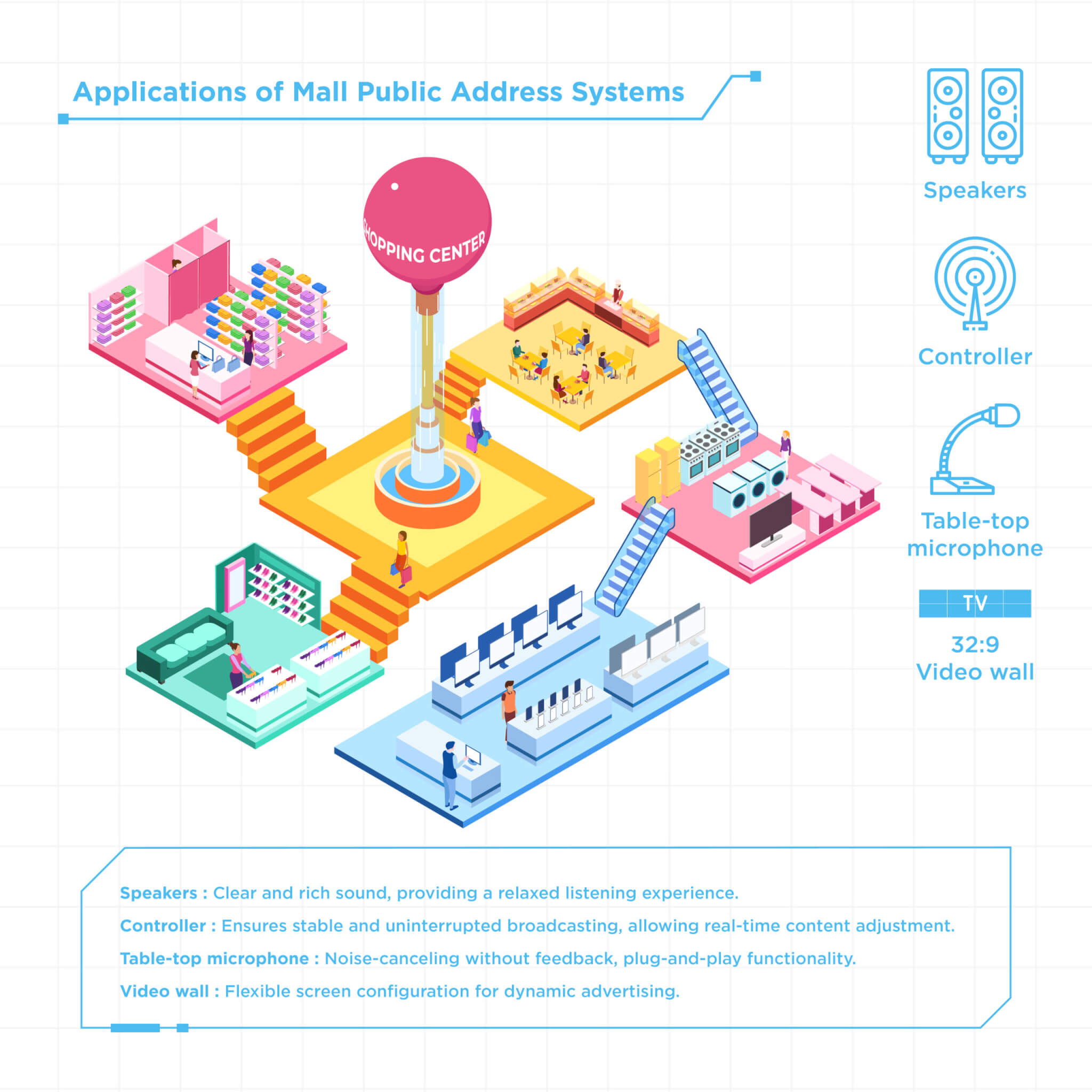
List of various speakers
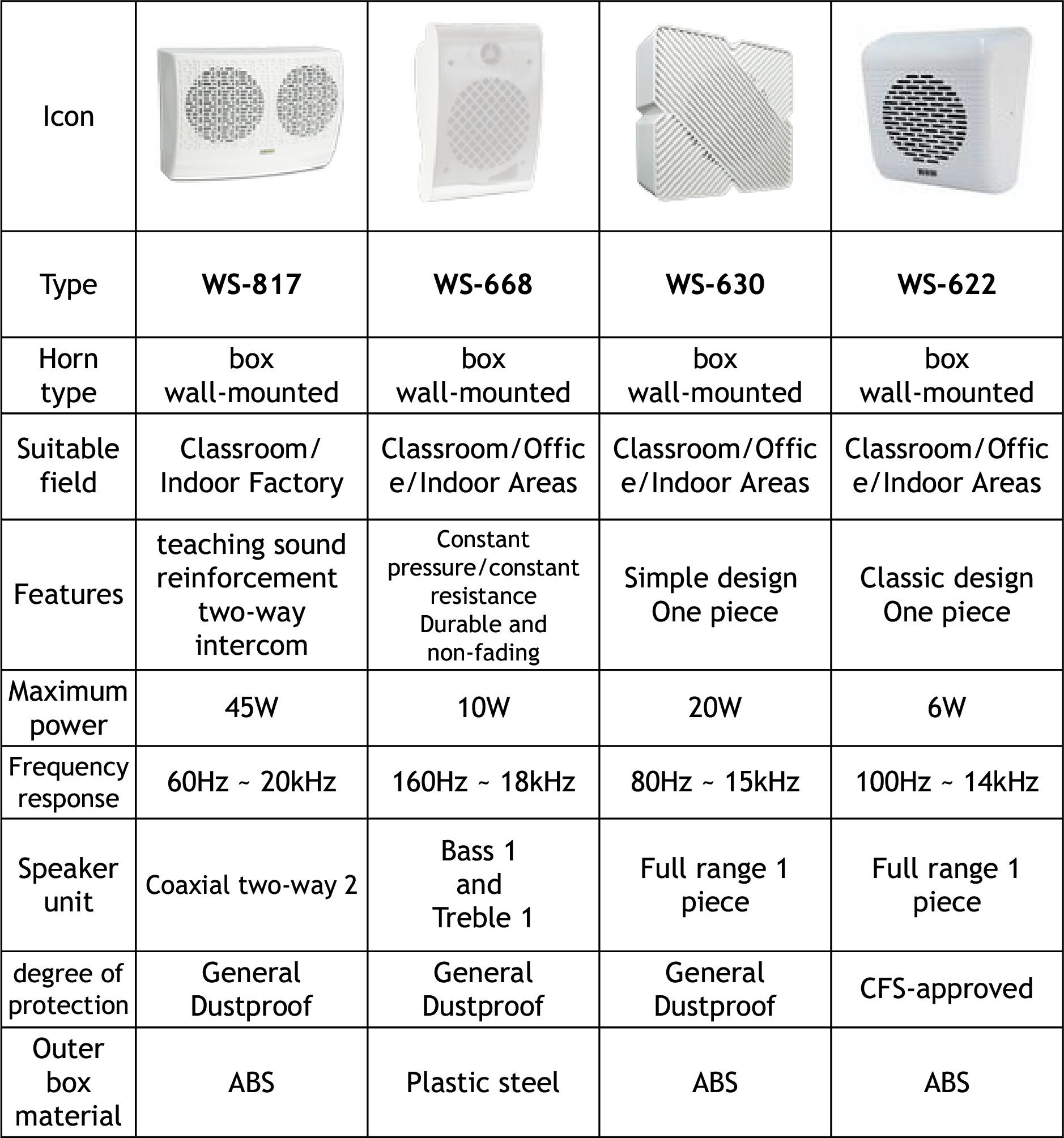
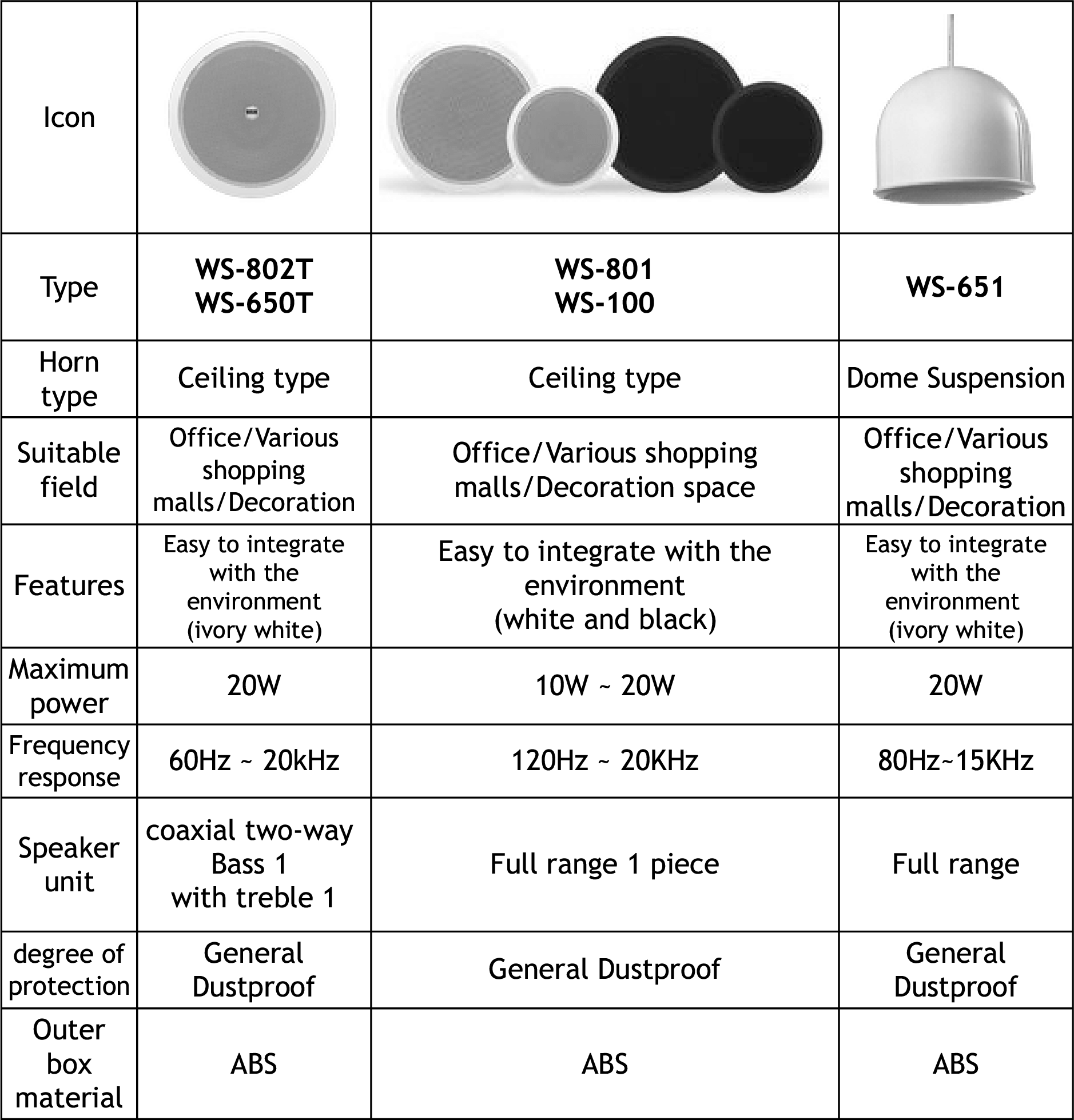
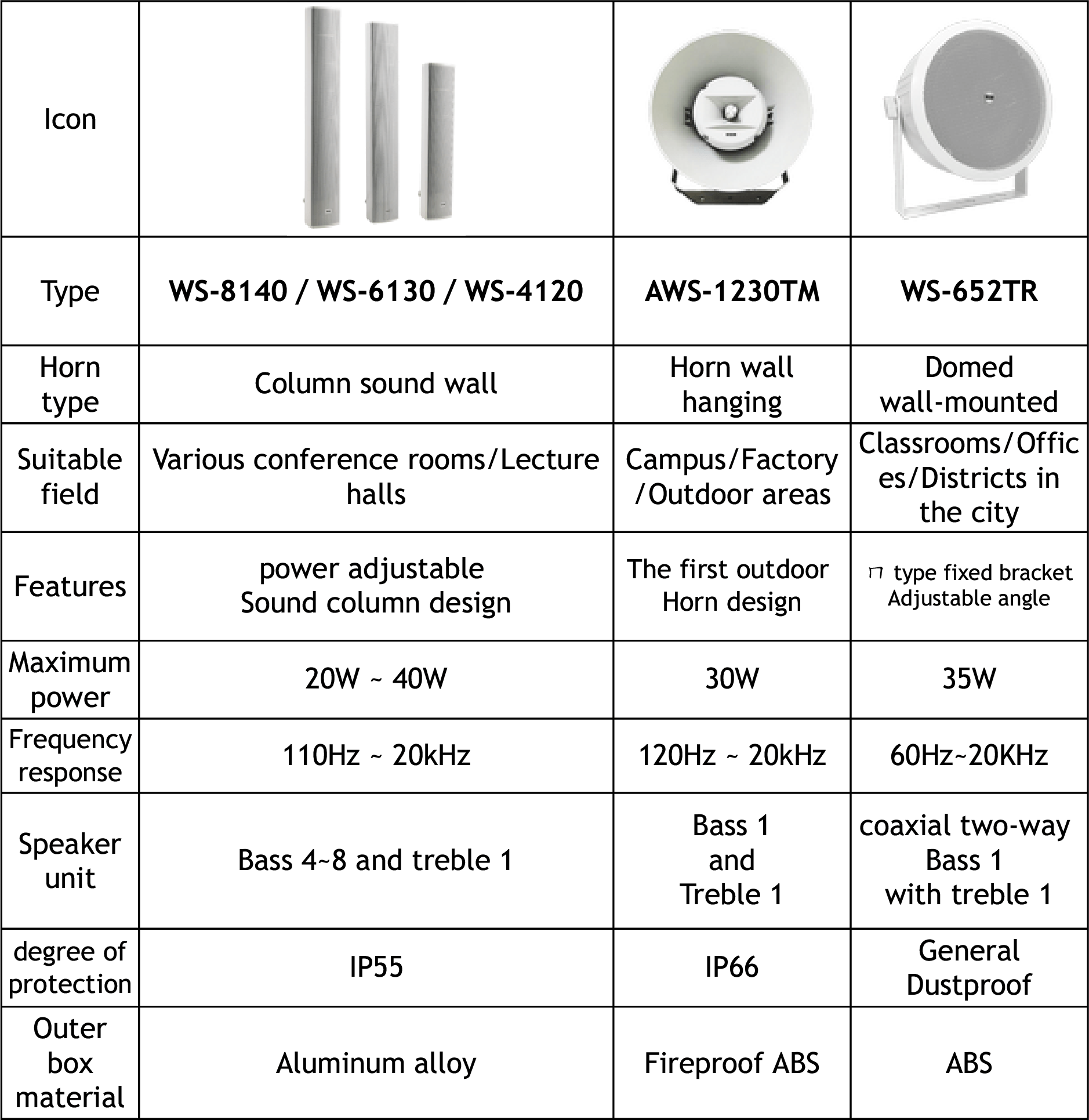
The best integrated solution
In order to integrate the majority of broadcasting system devices on the market, CarSense offers specialized control hosts, managers, and decoders to connect with existing equipment, without the need to replace or develop additional software, maximizing the usability.
If you’re in the PA system planning industry, you’ve probably heard of CarSense Electronics. CarSense is the leading brand in the domestic PA system market and holds the largest market share in Indonesia. CarSense’s IP digital broadcasting system integrates multimedia publishing, zone broadcasting, security, environmental monitoring, and audiovisual intercom functions through Internet of Things (IoT), Big Data, and audio-video streaming technology. It quickly establishes a convenient, comfortable, and secure communication environment.
If you have a PA application scenario that you would like to evaluate and need to choose suitable broadcasting equipment, feel free to contact BXB. We have professional consultants who can provide you with the best solution!
BXB Electronics is the leading brand of domestic conference systems and broadcasting systems. Combining networked audio-visual streaming technology and emerging technologies, it is widely used in smart conference rooms | digital campuses | smart classrooms | smart factories | station broadcasting, market share The rate is as high as 60%, and it is sold in more than 50 countries around the world.

